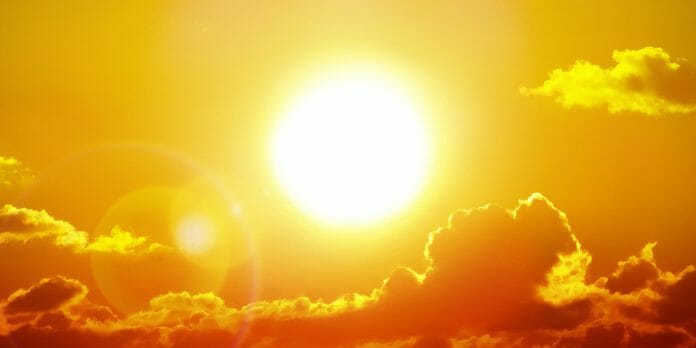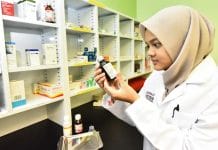Deputy Prime Minister Datuk Seri Dr Ahmad Zahid Hamidi said yesterday (April 28) the Cabinet needs to discuss whether there is a need to extend the school holidays, following a heatwave that is hitting the country currently.
“As the chairman of the national disaster committee, we have coordinated efforts with state governments, the Ministry of Health (MOH) and local authorities, not only to monitor, but to help those suffering from heatstroke due to climate change. I think it (the school holiday extension) should be discussed in a Cabinet meeting.”
Heat-related sickness is top of mind today for many people around the world not used to coping with extreme heat. When the body’s temperature rises faster than it can cool itself, damage to the brain and other vital organs can occur – even death.
Here are the key signs of heatstroke and other heat illness and how to possibly respond.
Heat rash symptoms
Excessive sweating can create an irritating heat rash on the skin that often appears as reddish clusters of pimples or small blisters, according to the US Centers for Disease Control and Prevention.
The rash is typically found on the upper chest and neck, under the breasts and in the groin area, and in elbow creases, the CDC said.
The mildest form, miliaria crystallina, shows up as tiny, clear, fluid-filled bumps that break easily. A rash called “prickly heat” occurs deeper in the skin and causes “small, inflamed blister-like bumps and itching or prickling in the affected area,” according to the Mayo Clinic. They can also fill with pus.
The least common form, miliaria profunda, attacks the deepest layer of the skin and causes firm, itchy pimples that look like goose bumps, the Mayo Clinic said.
Once you have a heat rash, keep the area dry. Don’t use creams and ointments, as warm, moist skin can block pores and make the rash worse, the CDC said. Wear loose cotton clothing and move to a cooler, less humid environment. Use a fan to circulate the air and take frequent breaks.
Heat cramp symptoms and possible treatment
As the heat continues to affect the body, muscle cramps or spasms may appear in the arms, legs and belly, the CDC said. Rest and drink fluids such as water or a sports drink every 10 to 15 minutes. Eat a snack, but avoid salt tablets.
If you or your loved one has heart problems or is on a low sodium diet, get medical help right away. Also seek medical help if the cramps do not resolve within an hour.
Heat exhaustion symptoms
Feeling dizzy or lightheaded or fainting after suddenly rising from a seated or prone position can be an early sign of heat exhaustion, the CDC said. Sit down in a cool place and slowly sip cool water, juice or a sports drink.
If you start to get a headache, nausea and weakness you could be progressing to heat exhaustion. Other signs are irritability, heavy sweating and thirst, a higher body temperature and decreased urination.
Get out of the heat and call for medical help, making sure someone stays with you at all times until that help arrives, the CDC advised. Remove unnecessary clothing, along with shoes and socks. Continue to take frequent sips of cool water. Try to use cold compresses, an ice bath or fans to cool down.
Heatstroke symptoms
The most serious form of heat sickness – heatstroke – is a medical emergency. Call 911 immediately. If treatment if delayed, heatstroke can be fatal.
Signs of heatstroke include confusion, slurred speech, seizures and loss of consciousness. A person can profusely sweat or they might instead have hot and dry skin. Their body temperature will be very high, and can climb “to 106°F (41°C) or higher within 10 to 15 minutes,” the CDC said.
Quickly remove all unnecessary clothing. Immediately apply an ice bath, if possible. Soak the remaining clothing with cool or icy water and place ice packs or cold, wet cloth on the head, neck, armpits and groin areas, the CDC advised.
Who’s most at risk
Children and the elderly are at highest risk from the heat, according to the CDC. Children often can’t tell adults when they are thirsty, and the body’s ability to flag thirst to the brain declines as we age.
Being obese also raises your risk, as does having heart disease, a mental illness or drinking alcohol. People who have poor circulation or who are already dehydrated, perhaps from prescription medications, are also at higher risk.
10 ways to prevent heatstroke
The good news is there are ways you can protect yourself and your loved ones from becoming sick from the heat. Here are 10 of the top tips experts recommend.
1. Learn the signs of dehydration: There are many signals your body sends to tell you that you are in need of fluids, according to the Cleveland Clinic.
You can have a dry mouth or a dry cough. You can have a slight headache or feel fatigued. Constipation is a key clue, as is a dark-colored urine – a well-hydrated body pees a pale, clear color. Your feet may swell or you may have a loss of appetite but still crave sugar.
2. Drink fluids even when not thirsty: Dehydration creeps up fast. Fight back by drinking cool fluids such as water as often as possible. Carry a water bottle with you throughout the day.
3. Wear sunscreen: Sunburned skin cannot regulate the body’s temperature as readily.
4. Limit sweating: Pay attention to humidity in addition to rising temperatures. Higher levels of humidity cause the body to sweat and lose precious fluids.
5. Wear loose, lightweight clothing: Tight-fitting clothes trap heat to the body, as do darker colors. Strive to wear very loose clothing that allows air to circulate, the CDC said.
6. Avoid alcohol: Alcohol is dehydrating, so while it may appear you are wetting your whistle, you are actually leaching moisture from your body.
7. Say “yes” to fans: Keep air moving inside and out to help cool down the body. Out and about? Take a bamboo folding hand fan with you and don’t be shy to use it.
8. Take a lot of breaks: Be sure to let yourself acclimate to high temperatures before you start any outdoor exercise or activity and take periodic breaks from the heat.
9. Eat hydrating foods: Why not whittle your waistline and stay hydrated at the same time? Veggies such as cucumber, iceberg lettuce, celery, radishes, tomatoes, green peppers, cauliflower, spinach, broccoli and baby carrots have few calories and are all at least 90% water by weight. Add fruits such as watermelon, cantaloupe, grapefruit, strawberries and star fruit to the list as well.
10. Avoid dehydrating foods: Excess protein can be dehydrating, studies have found. So can salty snacks and excess sugar, which studies say causes thirst, obesity and metabolic imbalances.









